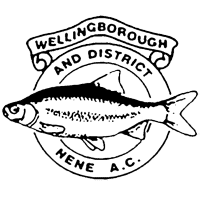Due to having the various different types of water that the club can offer our members fishing on, we are also able to offer a vast array of fish species for the angler to target.

We feel that it’s important here for us to state that care of our fish stocks and investing in providing habitats & natural areas for our many present fish species to thrive in now and in future is absolutely one of our clubs key mantra’s.
We are also very mindful of sharing the countryside with lot’s of other bird, mammal & rodent’s. We are very proud of providing habitats for many species to ensure that wildlife can thrive on any of the sites managed by our club volunteers.

Our volunteer bailiff team are very concerned by the care of our fish stocks when our members are fishing and will happily help and advise on the best practise of fish care. It needs to be all anglers absolute priority to ensure that their catch is returned to the water in equal if not better condition than when caught. We strongly advise the use of the readily available fish care products now available from many tackle shops.

Our waters are made up of gravel pits & some stretches of the canal & River Nene. All hold a wealth of coarse fish including but not limited to:
- Carp (common & Mirror)
- Crucian Carp
- Chubb
- Bream (Skimmers & double figure specimen fish)
- Tench
- Roach
- Rudd
- Dace
- Gudgeon
- Perch
- Pike
- Zander
- Bleak
- Gudgeon
- Eel
The ‘Canal & Rivers Trust’ has an excellent guide to our native coarse fish here.

Rivers, canals & lakes need a large amount of management to ensure that fish are able to successfully spawn & maintain the ecological balances that a healthy aquascape needs. This of course includes the various species of birds and animals that also feed on fish. Everything has to be managed very carefully and if this balance is tipped then every level of the natural food chain is affected.

You can read more on the clubs work in protecting fish stocks & how we work with other relevant organisations over in an article originally published i n Carpworld magazine but now available in digital format following the sad closure of Carpworld magazine.
